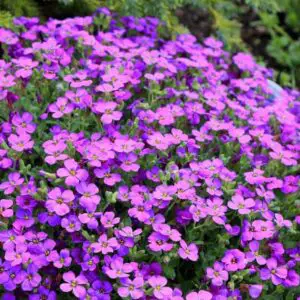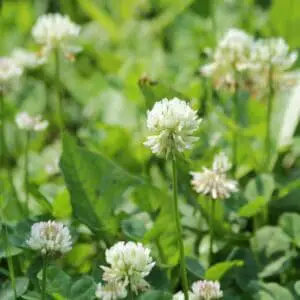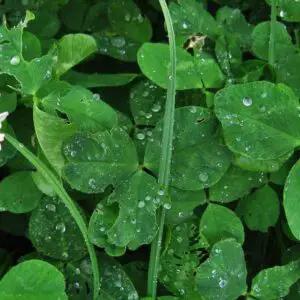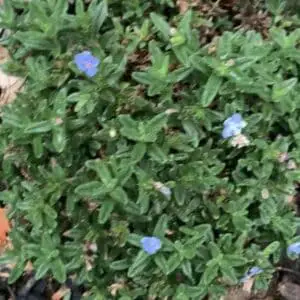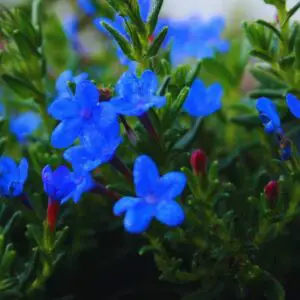Coreopsis (also known as tickseed) is a genus of flowering plants. This genus contains roughly 80 species. Coreopsis has colorful daisy-like flowers in different shades of red, orange, yellow, pink, and white. This flower is famous for being easy to grow, low-maintenance, and drought-tolerant. However, plants with these qualities also tend to be invasive in certain situations. So, is coreopsis invasive? Does it spread fast? Let’s find out!

Table of Contents
Is coreopsis native to North America?
The Coreopsis genus contains about 80 species. Almost half of them are native to North America (The United States and Canada). The rest of the coreopsis species are native to Central and South America.
In North America, coreopsis grows along roadsides and in grasslands (meadows).
Is coreopsis invasive?
Coreopsis is considered somewhat invasive. Some species can be invasive. Most of the coreopsis can spread fast but not all of them spread in an invasive manner.

Most plants can be invasive when grown outside their native locations. This is true for coreopsis too.
Coreopsis grandiflora (large-flowered tickseed) is one example. This species is native to North America, where it is not considered invasive. However, in China, the same plant is considered an invasive species. So, the invasiveness also depends on the location.
Is threadleaf coreopsis invasive?
Threadleaf coreopsis has thread-like leaves and is quite popular among gardeners. This species can spread fast by their short rhizomes. Bu thread leaf coreopsis is not considered invasive.
Is coreopsis tinctoria invasive?
Coreopsis tinctoria is considered invasive in several counties in California, United States. This species spread rapidly and grows even in poor soil.
Is coreopsis zagreb invasive?
Coreopsis zagreb is a cultivar of threadleaf coreopsis. This species is very similar to threadleaf coreopsis and considered non-invasive.

Does coreopsis spread quickly?
Coreopsis doesn’t spread quickly, though it can spread into a large area if no action is taken by the gardener. Coreopsis spreads by seeds and underground rhizomes.
How does coreopsis spread?
Seeds
All coreopsis varieties produce seeds and they can easily spread by them. Almost all of them also self-seed quite effectively. Since most coreopsis species are perennial, they will multiply every year.
Rhizomes
Some coreopsis varieties have underground rhizomes. These rhizomes put out new stems along them. Rhizome varieties live a very long time. Usually, they can live a few years and in some cases decades. They can survive winters much better than clump-forming varieties.
These rhizome varieties can also become quite invasive since they are hard to get rid of and they can survive in the soil for a long time.
Clumps
Some varieties of coreopsis form clumps. These are usually short-lived and can’t withstand winters like rhizome varieties. These will like up to 2 to 3 years. Clump-forming varieties are usually not invasive.
These coreopses are spread mainly by seeds.

How far does coreopsis spread?
The size of a coreopsis plant can vary, depending on the variety. Some coreopsis varieties can grow up to 4 feet (120 cm) high and 12 to 36 inches (30 to 90 cm) wide.
Rhizomic coreopsis can easily spread in a wide area. Cutting them back and removing parts of the rhizome can keep them under control.
Does coreopsis have deep roots?
Most coreopsis varieties do not have deep roots. Roots are a few inches deep. Shallow roots cause plants to become leggy and droop down.
How do you control coreopsis?
Controlling coreopsis is better than letting them go wild. This is especially true if they are species that tend to be invasive.
Plant in containers.
If you plant coreopsis in containers, you essentially limit their ability to spread. The rhizomes can only spread up to the size of the container. They will however drop seeds around it. But you can easily remove these tiny plants when they pop up. It is also very easy to remove the whole plant if you no longer need it.
Cut back rhizomes
Coreopsis varieties with rhizomes are difficult to get rid of. But if you cut them back and limit their growth, they won’t spread everywhere.
Clean them up once in a while
It is a good idea to carry out regular maintenance once in a while. When you do so, divide clumps and remove excess. Cut and remove rhizomes.
If you want to get rid of coreopsis completely, just dig out all the plants and throw them away. Make sure to get all the rhizomes out of the ground. It is not that difficult to get rid of them.
Sharing is caring! ❤️

Last update on 2024-05-17 / Affiliate links / Images from Amazon Product Advertising API



